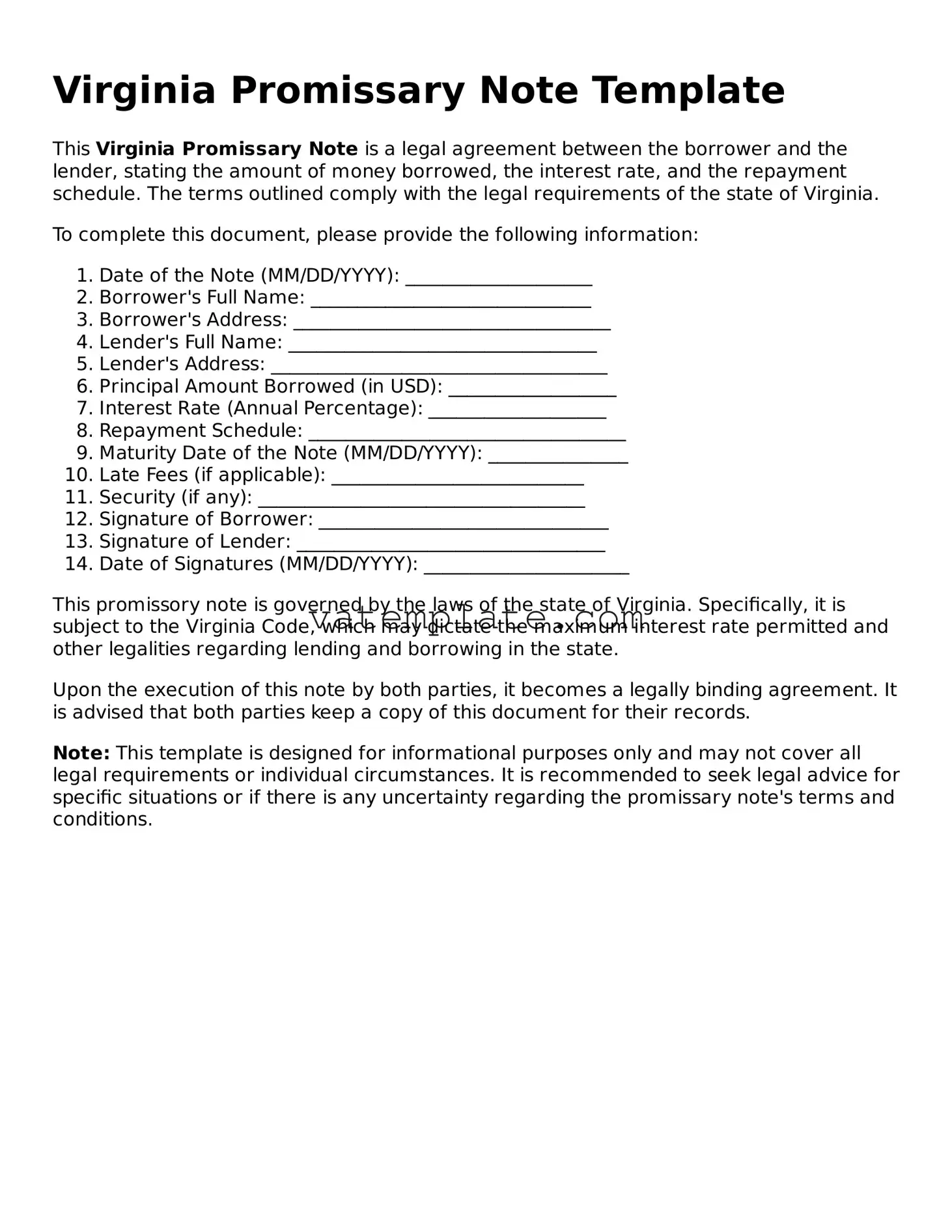Virginia Promissary Note Template
This Virginia Promissary Note is a legal agreement between the borrower and the lender, stating the amount of money borrowed, the interest rate, and the repayment schedule. The terms outlined comply with the legal requirements of the state of Virginia.
To complete this document, please provide the following information:
- Date of the Note (MM/DD/YYYY): ____________________
- Borrower's Full Name: ______________________________
- Borrower's Address: __________________________________
- Lender's Full Name: _________________________________
- Lender's Address: ____________________________________
- Principal Amount Borrowed (in USD): __________________
- Interest Rate (Annual Percentage): ___________________
- Repayment Schedule: __________________________________
- Maturity Date of the Note (MM/DD/YYYY): _______________
- Late Fees (if applicable): ___________________________
- Security (if any): ___________________________________
- Signature of Borrower: _______________________________
- Signature of Lender: _________________________________
- Date of Signatures (MM/DD/YYYY): ______________________
This promissory note is governed by the laws of the state of Virginia. Specifically, it is subject to the Virginia Code, which may dictate the maximum interest rate permitted and other legalities regarding lending and borrowing in the state.
Upon the execution of this note by both parties, it becomes a legally binding agreement. It is advised that both parties keep a copy of this document for their records.
Note: This template is designed for informational purposes only and may not cover all legal requirements or individual circumstances. It is recommended to seek legal advice for specific situations or if there is any uncertainty regarding the promissary note's terms and conditions.
